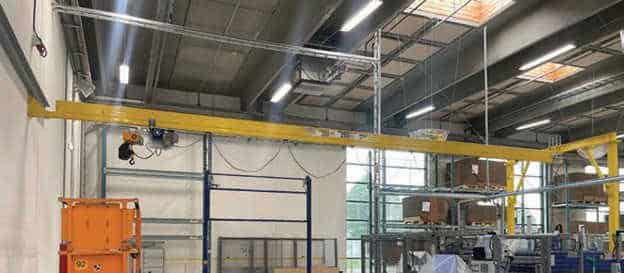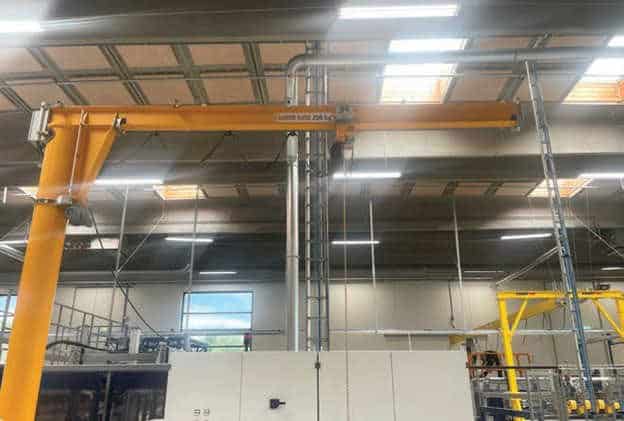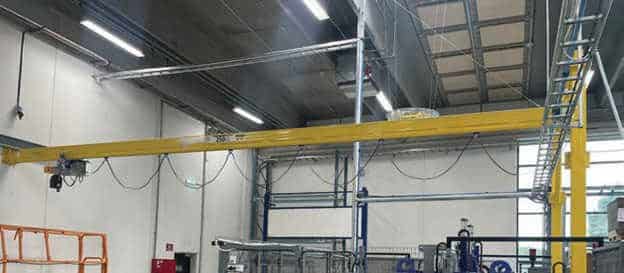Bridge cranes and jib cranes are widely used in various factory workshops. Dongqi Crane supplies thousands of lifting equipment to various factories around the world every year. Today Dongqi Crane shares with customers a case of a Danish mattress manufacturer’s customized crane. Due to the complex working conditions, the local crane company designed a jib crane and a bridge crane for this customer. At the same time, the limited space in the mattress manufacturing factory increased the difficulty of installing the crane. By studying this case, Dongqi Crane can more easily cope with the same type of installation environment in the future and better provide customers with perfect crane solutions.
The company develops and produces mattresses, pillows and other leisure products for more than 90 markets around the world.
These cranes are used to handle aluminum foil rolls in packaging machines
The first crane was a column jib crane with a capacity of 250 kg, equipped with an electric chain hoist and radio controller. It was chosen because of its 360° unlimited electric slew function for maximum mobility.
The second crane is a single light crane solution with a capacity of 250kg and a track length of 9.5m. It also has a carrying capacity of 250kg and comes with an electric chain hoist and radio controller.
“This [monocoque] crane is a good option in tight spaces where the rails/rails can be tied off the existing building and using struts on the ground – it’s a great solution scheme because we don’t need to use part of the total height of the building,”
Both cranes use electric chain hoists with a lifting speed of 2/8m per minute, a lifting height of 5m and a working load limit (WLL) of 250kg, plus an electric trolley.



When designing a crane solution to adapt to manufacturing plants with complex working conditions, multiple aspects need to be considered to ensure the safety, efficiency and economy of the solution. Here are some key takeaways:
Understand specific working conditions and needs:
Choose the right crane type and size:
Security and stability:
Flexibility and adaptability:
Maintenance and care:
Economical and cost-effective:
Comply with regulations and standards:
In summary, multiple aspects need to be considered when designing a crane solution to ensure the feasibility, safety and economy of the solution. By deeply understanding the actual needs and environmental characteristics of the factory, selecting appropriate crane types and specifications, and taking effective safety and maintenance measures, we can provide efficient and reliable material handling solutions for manufacturing factories with complex working conditions.
Contact our crane specialists
Send us a message and we will get back to you as soon as possible.